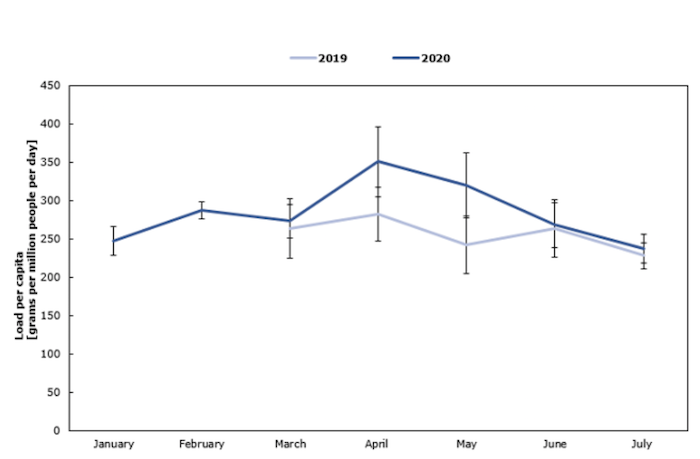News
Pee testing proves pandemic pot spike
Published on July 26, 2021 by oz. staff

An analysis of wastewater in five Canadian cities confirms cannabis use spiked at the start of the pandemic.
Since March 2019, Statistics Canada has been testing wastewater from various treatment plants in Halifax, Montréal, Toronto, Edmonton, and Vancouver as part of the Canadian Wastewater Survey.
They’ve been able to get a sense through city-wide pee how much weed has been consumed.
At peak pot use in April 2020, the study found 350 grams were consumed per one million people per day, compared to 282 grams per one million people per day in April 2019—give or take a few dozen grams.
“Results from the wastewater show that the levels of cannabis metabolite (THC-COOH) in wastewater increased in the initial months of the pandemic compared with early 2020 (April and May compared with March), before reverting to pre-pandemic levels,” says StatsCan.
“In April 2020, the load of cannabis metabolite in wastewater was 28% higher than in March 2020.”

A Statistics Canada graph shows the increase early in the pandemic of cannabis use, as evidenced from a wastewater study.
Confirms StatsCan weed survey results
The wastewater analysis further confirms results from the Canadian Perspectives Survey Series: Alcohol and Cannabis use during the pandemic, which found an increase in cannabis use during the pandemic.
According to Statistics Canada’s National Cannabis Survey about 20% of Canadians aged 15-plus used weed.
Halifax residents had the highest consumption per capita, compared to Toronto at the bottom.
“The analysis also indicates that estimates for drug use vary significantly from city to city, suggesting that different cities have distinct drug use profiles,” says the national statistical agency.
Testing can estimate the amount of drug metabolite—a chemical made when the body breaks down a drug—in the water system. That gives an idea of how much of each drug is being consumed within the area.
Meth, fentanyl also increased
The study also found an increase in fentanyl and methamphetamine.
“Moreover, these results signal that the increase in drug consumption may be a contributing factor to the increase in overdose-related deaths. This information will help inform decision makers on public health strategies, allowing public health authorities, law enforcement agencies, and other organizations to target their approach,” says StatsCan.
Leave a comment on our Facebook page.
© Copyright 2021 Okanagan Z. | About the oz.
Report a Typo or Inaccuracy
We strive to avoid typos and inaccuracies. However, on occasion we make mistakes. We value your contributions and help in correcting them.